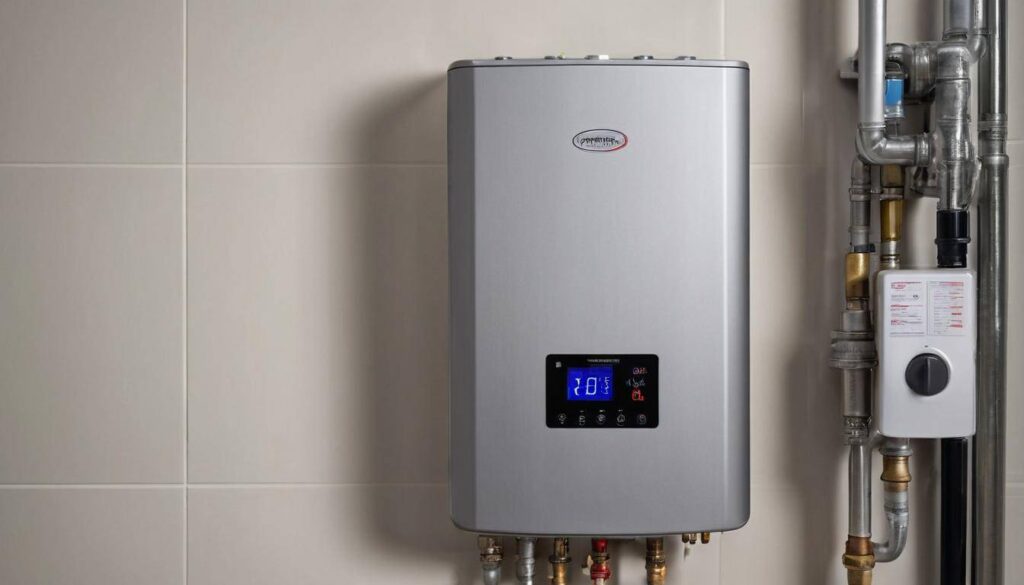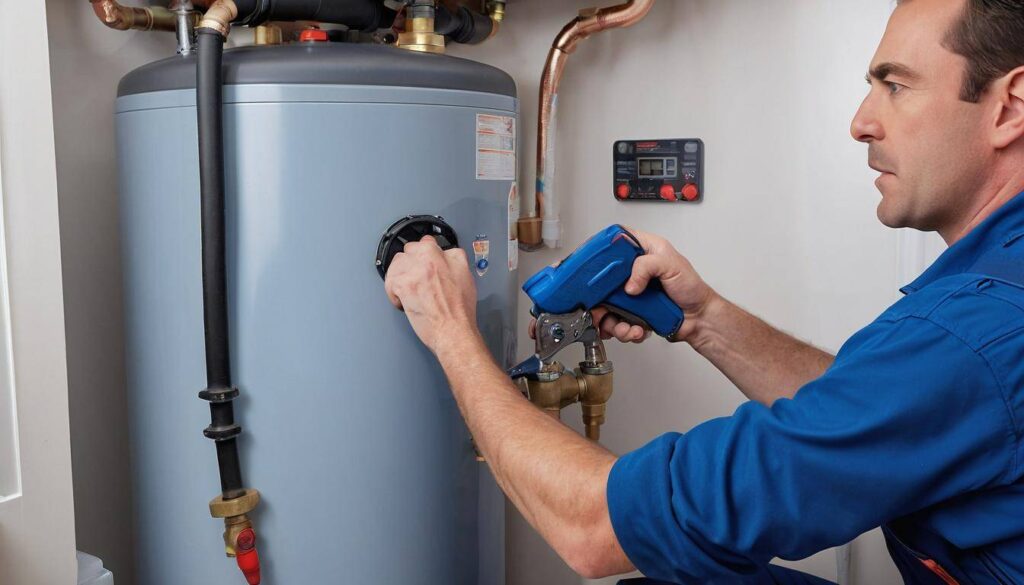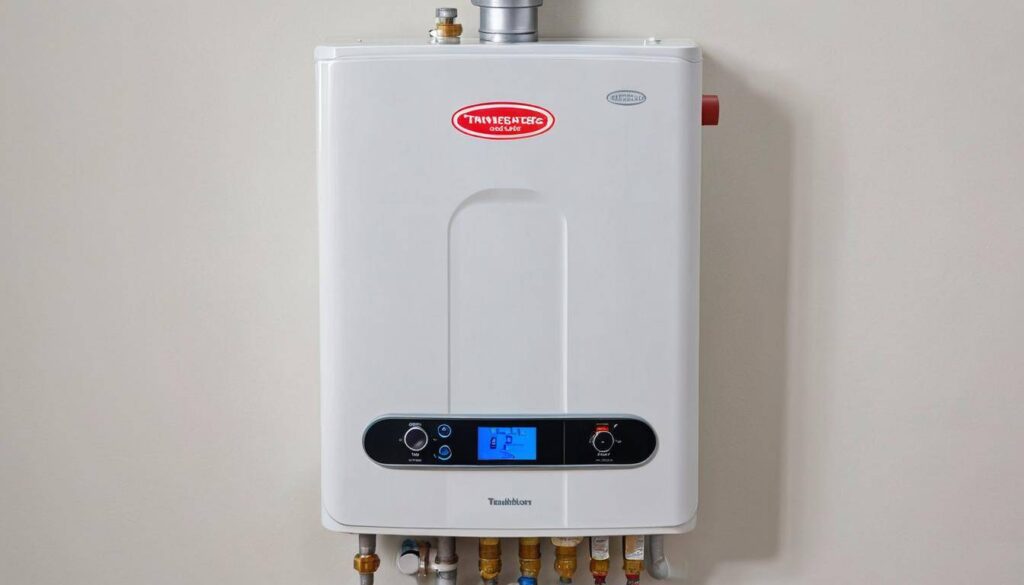Ever had a relaxing shower interrupted by an unexpected trickle of water? Living in Calgary means you might face fluctuating water pressure that turns daily tasks like washing dishes or watering plants into frustrating chores. Understanding and maintaining consistent water pressure isn’t just a luxury but a necessity for a hassle-free household routine.
To help you keep things flowing smoothly at home, we’ve gathered practical advice tailored specifically for Calgary homes. We’ll guide you through checking your water pressure with simple tools like a pressure gauge and turning off faucets to ensure accurate measurements. Surprising as it may seem, these straightforward DIY methods often hold the key to resolving your water woes effectively without breaking the bank. Now, let’s explore the essential first steps to prepare for your water pressure testing adventure.
To check the water pressure in your Calgary home, you can use a water pressure gauge attached to an outdoor faucet. Simply screw the gauge onto the faucet, turn on the water, and observe the reading. The standard water pressure for most homes should fall between 40 and 60 psi (pounds per square inch). If you notice significantly lower or higher readings, it may indicate an issue that requires professional attention.
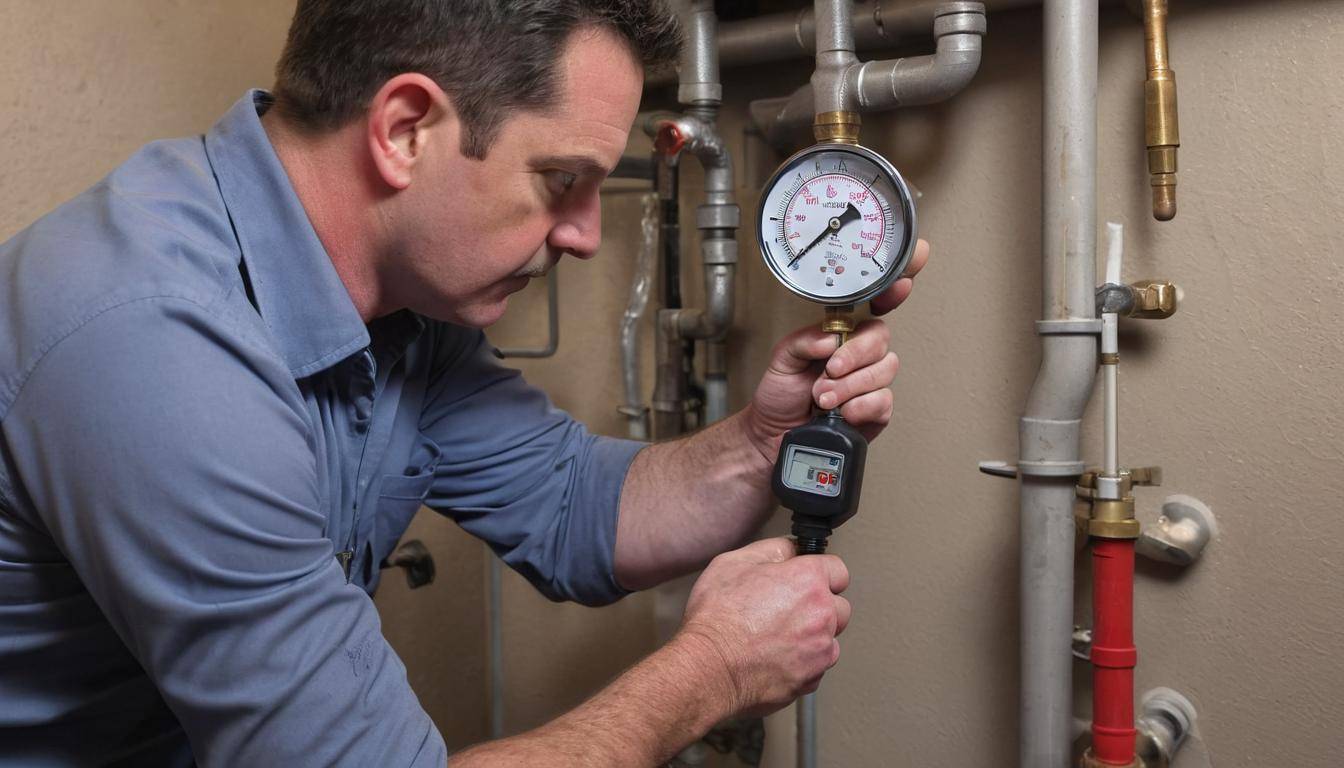
Preparing for Water Pressure Testing
Before conducting a water pressure test, it’s essential to adequately prepare. To obtain precise results from the test, you need to follow specific steps and ensure you have the right tools at your disposal.
Step I – Locate the Main Water Supply Valve
First, you’ll need to identify where your main water supply valve is situated. This is usually in the basement or near the water meter. The main water supply valve allows you to control the water flow during the testing process. If you don’t know where this is located, consult your home’s blueprint or reach out to a professional plumber for assistance.
Step II – Gather Necessary Tools
One of the primary tools you will need is a pressure gauge. These can be purchased at hardware stores and are essential for accurately measuring water pressure. Additionally, having a wrench and a bucket nearby can be helpful for any adjustments or maintenance that may be required.
Step III – Prep the Faucets
To achieve an accurate reading, it’s crucial to turn off all faucets and water-using appliances before conducting the test. This includes dishwashers, washing machines, and sprinklers. By doing so, you prevent any interference with the testing process, ensuring that the readings reflect the true state of your home’s water pressure.
Pulling off a successful water pressure test doesn’t have to be stressful if you take these preparatory steps seriously. It’s all about setting up correctly so that you get accurate results – resulting in actionable insights into your home’s water pressure situation.
As key as it is to be well-prepared when testing your home’s water pressure, gaining insight into which tools and techniques work best for this critical task can make all the difference. Let’s dive into uncovering these methods.
Key Tools and Techniques
When it comes to water pressure testing, having the right tools can make all the difference in obtaining an accurate pressure reading. Here are the key tools and techniques that will help you achieve precise measurements and identify any potential issues affecting your home’s water pressure.
Water Pressure Gauge
To measure the water pressure in pounds per square inch (PSI), a water pressure gauge is essential. These gauges are simple to use and can be attached to an outdoor spigot or a hose bib. When attaching the gauge, ensure there are no leaks or drips to ensure accurate readings.
Using a water pressure gauge is like taking your home’s blood pressure. It gives you an immediate snapshot of your water system’s health.
Digital Pressure Testers
For more precise readings and the ability to store multiple measurements for comparison, consider using digital pressure testers. These modern tools provide highly accurate measurements and are especially useful if you’re seeking consistent and reliable data over time.
!Digital Pressure Tester
Flow Meters
In addition to measuring water pressure, flow meters can be incredibly valuable for assessing the water flow rate. A drop in flow rate might indicate blockages or leaks within your plumbing system that could be affecting the overall water pressure. !Flow Meter
Imagine trying to drink through a straw with a kink in it—that’s what reduced flow feels like and your meter can clue you in!
PSI Range
It’s important to know that standard home water pressure should ideally fall within the range of 40-60 PSI. Any measurement significantly outside this range should prompt a professional inspection. Monitoring fluctuations can save you from costly repairs down the line.
By utilizing these tools and keeping an eye on the recommended PSI range, you’ll be equipped to diagnose any issues impacting your home’s water pressure accurately and efficiently.
Understanding these essential tools is crucial for maintaining healthy water pressure levels in your home, but knowing how to interpret their readings is equally important. Let’s explore some common pressure issues next and how to address them effectively.
Common Causes of Low Water Pressure
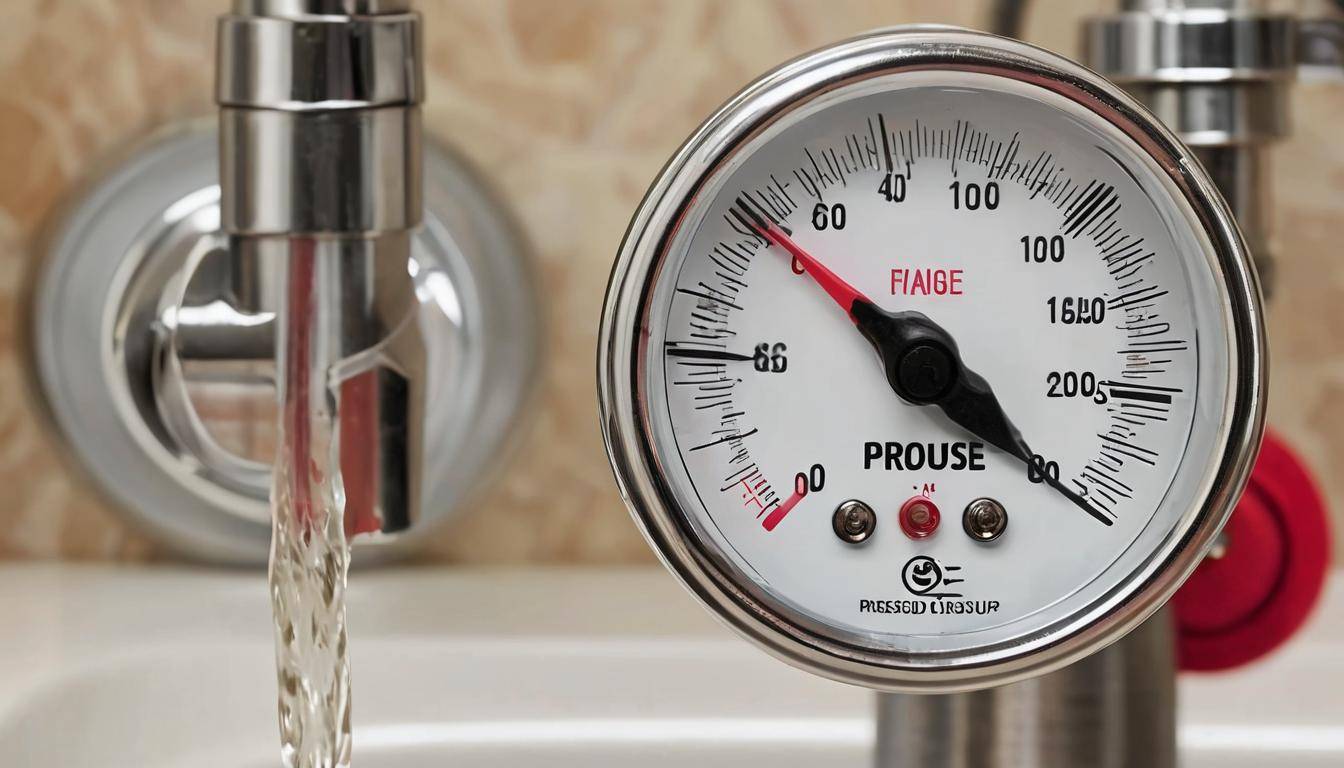
Let’s start with a common culprit: Pipe Corrosion. In older Calgary homes, you might find galvanized steel pipes. These pipes are durable, but over time they can corrode, just like a rusty bike left out in the rain. This corrosion causes the insides of the pipes to become rough and clogged up, making it difficult for water to flow through them easily.
Leaky Pipes are another sneaky problem. A small leak in your plumbing system might sound silent and harmless, yet it can significantly cause a drop in water pressure. Think of it as trying to fill up a bucket with a hole in the bottom—no matter how much water you put in, it will always leak out.
It’s important to pay attention to peculiar sounds or dripping noises coming from your plumbing. This could be a sign of hidden leaks that are affecting your water pressure. Inspecting visible pipes for signs of leaks is also helpful in identifying this issue early on.
Valve Issues
Now, let’s talk about Valve Issues. The shutoff valve controls the flow of water into your home. If it isn’t fully open or is partially closed, it can restrict the water’s flow much like a kinked garden hose would. Ensure that all shutoff valves are fully open unless there is a specific reason they need to be turned off.
In some cases, homeowners may accidentally bump into these valves while performing other tasks, causing them to close partially without realizing it. Regularly checking these valves ensures that minimal interference occurs, which helps maintain optimal water pressure throughout your home.
Clogged Pipes or Fixtures
Lastly, Clogged Pipes or Fixtures can also significantly impact water pressure. Sediment buildup from hard water can cause clogs in showerheads, faucets, and pipes. Regular inspections can help identify and resolve these issues before they worsen and affect your water pressure.
This mineral buildup is similar to cholesterol clogging an artery—it restricts the flow. It’s important to remove sediments regularly to maintain proper water flow and pressure throughout your plumbing system.
Understanding these common causes of low water pressure enables proactive steps to address them and ensure consistent and adequate water flow throughout your home.
Effective Solutions to Boost Water Pressure

When it comes to boosting water pressure in your home, a few fixes and adjustments can make all the difference. Let’s walk through some tried and tested solutions that homeowners in Calgary can implement to enjoy improved water pressure.
Step I – Clean Fixtures
Mineral deposits and sediment can accumulate inside fixtures over time, leading to reduced water flow. To combat this, start by removing and cleaning aerators and showerheads. Soaking them in vinegar overnight can help dissolve mineral build-up, ultimately restoring water pressure. Once cleaned, reattach the fixtures and notice the improved efficiency.
Step II – Adjust the Pressure Regulator
Homes equipped with a pressure regulator can benefit from a simple adjustment. The pressure regulator controls the level of water pressure throughout your home, so if you’re experiencing low pressure, try turning the screw on the regulator to increase pressure. However, it’s essential to exercise caution when making these adjustments, ensuring you don’t exceed safe levels of water pressure within your plumbing system.
Step III – Replace Corroded Pipes
Older homes with outdated galvanized steel pipes may experience reduced water pressure due to corrosion and rust buildup within the pipes. Consider replacing corroded pipes with modern materials like PEX or copper to improve water flow. These newer materials are less susceptible to corrosion, ensuring better long-term plumbing performance.
Some might hesitate when considering pipe replacement due to anticipated costs but think about how new pipes will not only restore your water pressure but also offer greater reliability and durability. It’s an investment that pays off in the long run.
Step IV – Install a Booster Pump
In cases where low water pressure is inherently due to municipal supply issues, installing a water pressure booster pump is recommended. This device increases the pressure of water entering your home, ensuring consistent and improved water flow. However, for proper installation and optimal performance, it’s crucial to consult plumbing professionals who can assess your specific needs and ensure the correct installation of a booster pump in your home.
By addressing these steps and solutions carefully, you can significantly improve and maintain healthy water pressure in your Calgary home. It’s important to approach these solutions methodically while keeping safety and efficiency at the forefront of any adjustments made.
Regular Maintenance Tips
It’s easy to forget about our home’s plumbing when everything seems to be working fine. But just like a car needs regular check-ups, your plumbing system benefits from routine maintenance too. Here are some key tips for maintaining water pressure at home.
Schedule Annual Inspections
Having a professional plumber inspect your plumbing system once a year can catch small issues before they become big problems. They will check for leaks, sediment buildup, and signs of corrosion in your pipes, identifying any potential threats to your water pressure early. This is especially crucial if you live in an older home or have noticed any changes in your water pressure.
For instance, during an annual inspection, a plumber might detect a small leak in your pipes that you never even knew existed. By fixing it early, you prevent the issue from growing into something bigger, ultimately saving you time and money.
Regularly Clean Fixtures
A simple yet effective way to maintain good water pressure is by regularly cleaning the fixtures in your home. Sediment and mineral buildup can block the flow of water, leading to reduced pressure and efficiency.
Cleaning aerators and showerheads on a regular basis helps prevent sediment buildup, ensuring a steady and uninterrupted flow of water. It’s a straightforward task that makes a notable difference in maintaining optimal water pressure throughout your home.
Monitor Water Pressure
Installing a pressure gauge on your main water line and checking your home’s water pressure monthly can help you catch any issues early on. Fluctuations in water pressure could indicate an underlying problem, and catching it early prevents further damage to your plumbing system.
You might notice that your shower suddenly has lower water pressure than usual. Without monitoring the overall water pressure in your home, you might overlook this crucial change and miss the opportunity to address an emerging issue promptly.
Use Strainers and Water Softeners
Strainers and water softeners are useful tools for maintaining optimal water pressure. Strainers installed in faucets and showerheads help reduce sediment from entering the system, while water softeners work to reduce mineral deposits that can build up in pipes and appliances over time.
If you live in an area with hard water, mineral buildup is more likely to occur, impacting water flow and reducing the life of plumbing fixtures. Using strainers and water softeners can make a real difference in preventing these issues.
By incorporating these maintenance tasks into your routine, you not only ensure consistent water pressure at home but also extend the life of your plumbing system. Regular care now saves you from costly repairs or replacements down the road. Remember, small efforts today can lead to significant benefits tomorrow.
Ensuring Safe Water Pressure Levels
Water pressure plays an essential role in maintaining the functionality and efficiency of a plumbing system. Excessive pressure can cause pipes to weaken or burst, leading to potential water damage, while low pressure can result in inefficient appliance performance and inadequate water flow. Keeping the water pressure at safe levels is crucial for the longevity of your plumbing system.
High water pressure can lead to various problems such as leaks, pipe damage, and premature wear and tear on fixtures. Conversely, low water pressure can result in slow-flowing taps, insufficient flushing of toilets, and reduced effectiveness of appliances like washing machines and dishwashers. For instance, a faucet with excessively high water pressure might produce a loud banging noise when turned off, known as “water hammer,” signaling dangerously high water pressure that needs attention to prevent potential damage.
To counteract these issues, it’s essential to take proactive steps to manage water pressure effectively.
Step I – Regular Monitoring
Install a permanent pressure gauge to consistently monitor your home’s water pressure levels. By doing so, you can keep a close eye on any fluctuations that may indicate potential problems. Be sure to check the gauge routinely to ensure that the pressure remains within safe limits.
Step II – Install Pressure Reducing Valves
In cases where the water pressure is too high, installing a pressure reducing valve (PRV) can help maintain it within safe levels. A PRV acts as a barrier to regulate the flow of water entering your home, ensuring that excessive pressure does not cause damage to your plumbing system or household appliances.
Pressure reducing valves are vital components for managing household water pressure and safeguarding against potential damages caused by high water pressure.
Step III – Engage Professional Services
Regular inspections conducted by professional plumbers are crucial for assessing your plumbing system’s condition, including monitoring and regulating water pressure. Hiring experienced professionals from My Calgary Plumber ensures that your home’s plumbing operates safely and efficiently. Their experts diagnose issues and make necessary adjustments to protect your home from potential damages related to water pressure.
Preventive measures like these are essential for maintaining safe and optimal water pressure levels in your home and ensuring long-term integrity of your plumbing system while promoting efficient appliance performance. Taking proactive steps today can save you from costly repairs in the future.
Call our top-rated plumber (576) 707-0606 for expert advice and solutions tailored to your needs.

